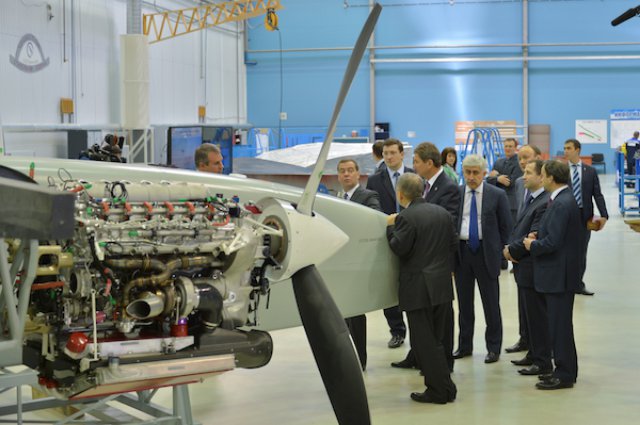Russia has started tests of a new unmanned helicopter that can perform both reconnaissance and combat functions for use by the Russian army in Syria and other hot zones, according to Rostec, one of Russia’s largest state and defense corporations (and the designer of the new model).
Representatives of the Russian Defense Ministry have confirmed those plans for the new helicopter as well.
Production of the new helicopter will be carried out at the capacities of Russian Helicopters. The new machine is built on a co-axial scheme and has a take-off weight of up to 500 kg (1,102 pounds). It is equipped with a diesel engine.
So far, production of two prototypes of the helicopter have been completed. Both models are currently undergoing testing, which is conducted in the training area of Russia’s Design Bureau of Industrial Automation in the Saratov region.
Anatoly Serdyukov, a former Russian defense minister and head of Rostec’s aviation cluster, believes the new unmanned helicopter is unrivaled in capability.
“Such a helicopter can carry heavy monitoring systems and certain weapons on its board, which could not be lifted by the majority of similar models of unmanned helicopters, including those built by our Western competitors. The scope of the new machine is very wide. It has good prospects both in the military and civilian markets,” said Serdyukov.
The new helicopter was designed by the experts of the Kumertau Aircraft Production Enterprise, a Russian Helicopters design and engineering subsidiary. Engineers from Almaz-Antey Corp., a leading developer of anti-aircraft defense systems in Russia, also contributed to the design.
According to designers, the new helicopter has a fundamentally new transmission design compared to its predecessors and is capable of reaching speeds up to 200 kph on flights lasting up to five hours.
Operation of the helicopter is carried out by an autonomous ground station, which is installed on a Russian Kamaz truck.
The new helicopter has the ability to perform tasks in accordance with a predetermined program. That involves preliminary assignment of coordinates and details of a planned route that takes place through the entering of a starting point, intermediate points of a planned flight and a landing site. After that, it is able to operate independently, making a route to the determined destination.
The new helicopter is able to track moving and fixed targets. It can provide assistance to artillery tactical units for the detection of missile systems, ammunition depots, tanks, mechanized enemy groups and other similar targets that could be an object of attack.
It is able to track at least 50 ground targets simultaneously, transferring data to control points. Maximum operating altitude is 11,500 feet.
According to its designers, the new unmanned helicopter can be operated at temperatures ranging from below 30 to 50 deg C. It mostly comprises Russian-made components and was designed using open-architecture principles.
The helicopter also has the ability to adjust fire and target designation for weapons and to map hard-to-reach areas in an effort to search for missing ships or people in a natural disaster, for example.
As for its technical equipment, the monitoring complex of the new helicopter is equipped with an automatic piloting system, which was specially designed by Russian engineers for unmanned aerial vehicles. A distinctive feature of this system, according to designers, is its built-in micromechanical inertial navigation system, which has thermal compensation and vibration isolation. This system conducts pre-flight and continuous in-flight self-diagnostics of the main sensors. The armament of the new helicopter includes unguided aircraft missiles and high-explosive fragmentation and cumulative mini-bombs.
Andrey Boginsky, head of Russian Helicopters, also believes the new helicopter can be used for civilian purposes.
“There is a test program, and we see a great interest for the new model from some oil and gas companies, as well as ocean lines, including those that plan to use the Northern Sea Route, for the delivery of their cargo from Asia Pacific to Europe,” said Boginsky. “The new helicopter can be useful for ice exploration of the Northern Sea Route and other similar routes that pass through the Arctic region. We see a great demand for it already, so we hope that a [civilian] series production of the new model will be started during the next 1 to 1.5 years.”
In the meantime, leading Russian and foreign experts in the field of helicopter engineering and manufacturing believe Russia has chosen a right time for the design and production of such a helicopter.
Vladimir Stepanichev, a retired colonel of the Soviet army and a Russian expert in the field of military aviation, believes the design of unmanned helicopters is a new direction in the field of unmanned aviation both in Russia and the West, where OEMs have been actively developing them over the past decade.
He said the unmanned vertical-take-off-and-landing systems lagged behind the development of fixed-wing unmanned aircraft systems (UAS) because of their greater technical complexity. Stepanichev added this complexity is especially obvious in the design of automatic control systems.
“Experimental design works during the development of an unmanned aircraft costs about $10 million to $15 million, depending on its mass as well as its tactical and technical characteristics. At the same time, the development of a helicopter-type UAS is at least 30% more costly than that,” said Stepanichev.
According to some leading Russian experts in the field of helicopter engineering, the biggest problem during the design of an unmanned helicopter is mainly related to the design of its reliable automatic control system, as well as algorithms for its functioning.
A spokesman for Sergey Shoigu, Russia’s Minister of Defense, said Shoigu believes the new unmanned helicopter can be considered one of the best in its class.
Shoigu’s spokesman noted how the Northrop Grumman MQ-8 Fire Scout and the VSR700 has probably become among the most high-profile unmanned helicopters produced.
He added that most unmanned helicopters, which have been shown at various events and expos, significantly lagged behind Fire Scout in terms of mass dimensions and other technical characteristics.
Photo: Eugene Gerden

